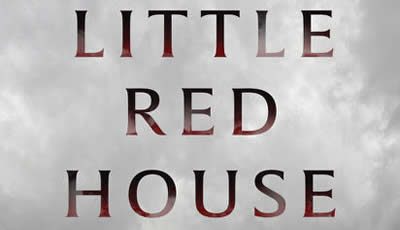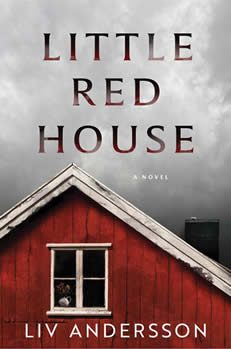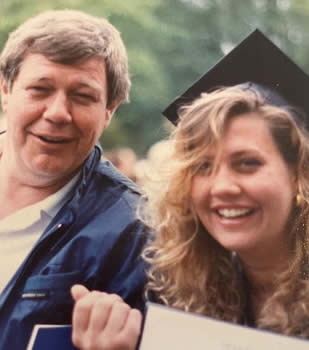

Featured Articles On the Cover: Liv Andersson
Sins of the Past
 By Dawn Ius
By Dawn Ius
Three back-to-back, seemingly mundane events sparked the idea behind Liv Andersson’s gripping new thriller, LITTLE RED HOUSE, a dual-timelined story about a woman who inherits a small house in New Mexico from her adoptive mother—and quickly learns that the inheritance is much more sinister than the vindictive games her mother used to play on her.
Andersson, who also writes mysteries under the name Wendy Tyson, was at her day job when her manager offhandedly told her about a co-worker whose grandmother had died and left her a little blue house in Texas.
“The co-worker hadn’t even known her grandmother owned property in Texas, so, as you can imagine, the will came as a surprise,” Andersson says. “I was immediately intrigued.”
Shortly after that, Andersson and her husband spent time in New Mexico. They traveled around the state, and while at a museum in Santa Fe, Andersson came across a photograph of a tiny shotgun-style red house set in the New Mexico desert.
“My mind returned to that little blue house in Texas, and a book idea was born,” she says. “I was still noodling through the plot when I heard an Iggy Pop song sung by Siouxsie and the Banshees—’The Passenger.’ You know the lyrics: I am the passenger / And I ride and I ride / I ride through the city’s backsides… In a flash, Connie Foster’s character and journey took shape, from the ‘trips’ Eve forced her to take, to the little red house in the New Mexico desert she inherited from Eve, to Connie’s quiet resistance, to the darker side of humanity.”
At the same time, Andersson says she’s long been haunted by Canada’s notorious “Highway of Tears,” a desolate stretch of road where, since the 1960s, Indigenous women have disappeared and/or been murdered.
“There has been no justice for most of those women or their families, and the circumstances surrounding many of their disappearances remain a mystery,” she says. “I thought about that highway often while drafting the novel. Before becoming a lawyer and author, I worked with at-risk teenagers, some of whom had been trafficked. I wanted to highlight the vulnerability and negative stereotyping of this population, and, through Connie, perhaps provide some fictitious justice. LITTLE RED HOUSE is not a light read, but I hope readers will see a glimmer of hope at the end.”
In this exclusive interview with The Big Thrill, Andersson provides further insight into her gripping thriller, LITTLE RED HOUSE, and explains how this novel is a slight departure from her other work, and why she chose to use a pen name.
“Unearthing the past” is a common trope for thriller, mystery, and suspense novelists—and it seems to be making a resurgence with recent books. You tap into that trope in your brilliant new book, LITTLE RED HOUSE. What drew you to that theme?
I’m obsessed with abandoned buildings. Old houses, derelict resorts, vacant factories—these forsaken places evoke an array of feelings. They’re also fantastic fodder for crime novels, both as a setting (what’s spookier than an abandoned building?) and as a structure to drive the theme of “unearthing the past.”
For LITTLE RED HOUSE, the abandoned building came first, and the theme followed. Once I knew Connie Foster was going to inherit that little red house in New Mexico from the mother she abhorred, I also knew she had to spend her chapters finding out why Eve had bequeathed her that house. The house—along with her search for the meaning behind it—became both a symbol of Connie’s relationship with Eve and her way of understanding and reckoning with her family’s sordid history.
LITTLE RED HOUSE is written in dual timelines, which is an ambitious structure. What were some of the challenges of writing this way and how did you navigate them?
Eve Foster and Connie Foster’s stories, although separated by over two decades, are intricately connected, and the connection becomes clear in the book’s denouement. Dual timeline books can be hard to manage because each timeline must serve the overall plot and the theme(s). It’s easy for one timeline to become the star and the other one to feel drawn out or unnecessary. To guard against having one timeline lag, once I decided I needed both timelines, I made a few decisions upfront. I wrote Connie and Eve’s stories separately and in their entirety first before weaving them together in a way that made the drama and tension of the past both inform and drive the drama and tension of the present. I also wrote primarily from dual perspectives, using first person point of view for Connie’s present-day chapters and third person point of view for Eve’s 1997 chapters. This helped to define each woman’s voice. Finally, I kept Eve’s chapters especially short to drive the pace and suspense.
Eve Foster isn’t exactly what you would call a likeable character, and even after she’s dead, she still manages to wreak havoc. Unlikeable characters aren’t new, but there’s always a risk involved. How did you balance the thin line between being unlikeable and also relatable and sympathetic to the reader?
Characters don’t necessarily need to be likeable, and, indeed, novels like Gone Girl challenge us to question our own expectations about characters, but it helps if readers understand a character’s motivations. While writing LITTLE RED HOUSE, I thought a lot about the differences between an antihero and a villain. I see Eve as more of an antihero than a villain. For much of the book, she’s doing the right thing, although for arguably the wrong reasons.

Andersson kayaking with her husband in Chittenden, Vermont. “Kayaking kept me sane during the pandemic,” Andersson says. “It was a great way to explore nature, social distance, and stay cool in the summer. It also gave me time to work through plot holes and come up with new ideas.”
In LITTLE RED HOUSE, Eve sets off for Nihla, New Mexico, to find her daughter, Kelsey, and is met with opposition from Nihla’s townspeople, especially the men. Even as the town turns against her, she’s cunning and confident and fearless in her twisted determination to find Kelsey. In my first few (a dozen!) iterations of the novel, Eve was even more unlikeable. As I got to know her through the editing process, I started to have empathy for her character, and my lens altered. I gave her small moments of compassion toward others and a background that made her, if not likeable, at least understandable. Those elements coupled with her bold determination cause her to be, in my view, a more sympathetic character.
The other characters are also well-rounded, flawed, and authentic. Who was the easiest to write and why?
I felt closest to Connie, and so she was the easiest to write. This was the first time I’d written a crime novel using first person point of view, and in the beginning, I wasn’t sure I liked it, but as I “lived” with Connie over time, the intimacy of first person provided a helpful window into her character.
LITTLE RED HOUSE is your debut as Liv Andersson, but you are a multi-published author under Wendy Tyson. Why did you decide to go with a pen name for this novel? It’s a much darker novel than your other books—which tended to veer more toward cozy. What was the catalyst for that change?
I’ll start with the second part of your question first. I love reading crime novels, including darker thrillers and lighter mysteries, and I enjoy writing books on both sides of the crime spectrum. While most of my books are cozy-ish or traditional mysteries, my novel A Dark Homage is pretty dark, so this isn’t a complete departure. I’d had the idea for LITTLE RED HOUSE for a while, and during the turmoil of the pandemic, I finished a draft of the book. I think in retrospect writing LITTLE RED HOUSE during such a tumultuous time provided me with an outlet for my own angst.
As for the pen name, my publisher requested it. Because most of my other books are lighter crime novels, they wanted to set my thrillers apart. The name itself is an homage to my late father, whose grandmother was from Sweden.
This is not a slow burn book. It’s a page turner from Page 1. As you know, The Big Thrill is as much for writers of the genre as it is readers. What tips would you offer for creating the kind of pacing that keeps you turning pages?
The pace of a book is important, and the more an author learns craft, the more they come to understand the importance of creating “hooks”—the imbedded questions that keep the reader turning pages. The overall plot will have a hook (that is, the overarching question the reader wants answered, such as who is the killer). Each chapter and scene should have a hook, even if it’s a subtle one. Author Kathy Reichs does this particularly well in her Temperance Brennan novels. Every scene contains its own hook, and nearly every chapter ends on a cliffhanger. As a reader, you can’t turn the pages fast enough. You’re compelled to find out what happens next.
There are other techniques an author can use to control pace as well. To quicken the pace, an author might use shorter chapters, paragraphs, and sentences, increase the amount of dialogue, or add more action. To slow down the pace—and there may be good reasons to slow it down in certain spots—an author might use longer paragraphs and sentences and/or include more interior monologue. Always, though, the story should move forward so that the reader feels they are getting closer to those answers.
This book feels ripe for the big screen. If you had to cast some of the main characters, who would top your list?
Ana de Armas for Connie Foster, Teressa Liane for her sister, Lisa Foster, and Matt Bomer for Jet Montgomery. Eve Foster is harder because when we meet Eve, she’s young—only 32—but very confident, composed, and more than a little cruel. I think Anya Taylor-Joy would make a great Eve.
What can you share about what you’re working on next?
I just submitted my latest Liv Andersson novel, a thriller set in a fictional town on the Maine coast, to my publisher. Now I’m working on a new mystery series and finishing a contemporary women’s novel set in Martha’s Vineyard.
- On the Cover: Alisa Lynn Valdés - March 31, 2023
- On the Cover: Melissa Cassera - March 31, 2023
- Behind the Scenes: From Book to Netflix - March 31, 2023




